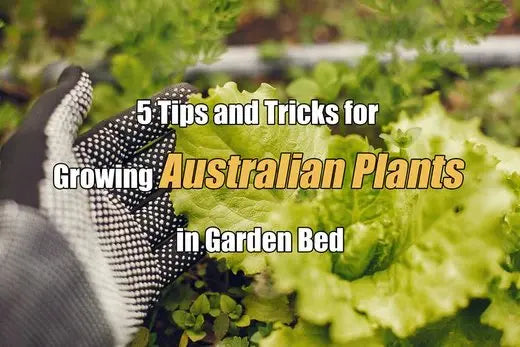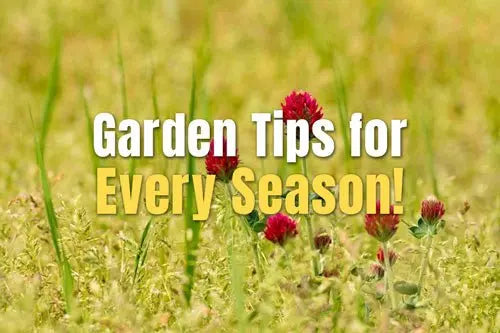The Beginner's Guide to Starting a Vegetable Garden
Gardening transcends the boundaries of a mere pastime. The value of vegetable gardening is immeasurable, offering a source of fresh, nourishing produce steps away from your kitchen and standing as a pillar of sustainability. But, do you know what you should do before starting your planting plan in metal raised garden beds? Here is a guidance about vegetable garden for beginners.

Choosing Your Garden Location
Securing the perfect spot for your vegetable garden is paramount, a decision that plays an instrumental role in determining your harvest's overall bounty and quality. In your quest for the perfect garden locale, two fundamental aspects demand your attention: the interplay of sunlight and shade and the soil's quality and drainage capabilities.
The pivotal role of sunlight in facilitating photosynthesis, the process by which plants transmute light energy into vital chemical energy for growth, cannot be understated. Most vegetables flourish with approximately 6 to 8 hours of sunlight per day. Certain veggies, such as leafy greens and cool-season crops, thrive when shielded from the afternoon's fierce heat, necessitating a dappled shade.
The soil quality in your selected plot is another pivotal factor influencing your garden's triumph. A comprehensive soil test will unveil the intricacies of your soil's pH and nutrient content, guiding you on the necessary amendments to optimize its fertility. The ideal soil pH hovers around the 6.0 to 7.0 mark.
Moreover, efficient drainage ensures water doesn't stagnate around the vegetable roots, averting potential disease outbreaks. You can gauge your soil's drainage proficiency by conducting a simple test - dig a hole, fill it with water, and determine how long it takes to drain thoroughly. A drainage time of approximately one hour is indicative of optimal soil drainage. In cases where the soil is dense and clayey, incorporating organic matter, such as compost or well-rotted manure, can substantially ameliorate its structure and drainage.
Selecting Your Vegetables

Embarking on a vegetable gardening journey can be incredibly rewarding, especially for beginners who start with easy-to-grow vegetables. These less demanding crops often yield bountiful harvests, providing a gratifying entry point into Gardening.
Consider cultivating vegetables such as tomatoes, lettuce, and radishes. Tomatoes are versatile, contributing to various dishes, from refreshing salads to rich sauces. With its quick growth cycle, lettuce offers the pleasure of a speedy harvest, while the crisp texture of radishes can enhance your salads in just a few short weeks.
When mapping out your vegetable garden, be mindful of your location's climate and weather patterns, as some vegetables may be better suited to your region than others. Local gardening clubs and experts can offer valuable insights into your area's most suitable vegetable varieties.
Raised Garden Bed Preparation

For garden bed preparation, beginners have two primary options: raised beds or in-ground gardens. Each comes with its benefits and potential challenges, and the best choice ultimately depends on personal preference and the specifics of your gardening space.
Raised beds are a fantastic option for gardeners with poor native soil or limited space. They provide excellent drainage and make it easier to control soil quality since you're bringing in new soil to fill the bed. However, they can be more costly and time-consuming to set up initially.
On the other hand, in-ground gardens are typically more straightforward and less expensive to establish. They also tend to retain moisture better than raised beds. However, in-ground gardens may require more effort to improve soil quality and ensure proper drainage.
Regardless of which option you choose, soil amendment is key to a successful vegetable garden. Adding organic matter, such as compost, is one of the best ways to enhance soil fertility. Compost improves soil structure, provides a range of essential nutrients for plant growth, and even helps soil retain moisture. By preparing your garden bed and correctly amending your soil, you're laying a solid foundation for a healthy and productive vegetable garden.
Also read about how to prepare the metal raised beds for Winter, and Spring.
Planting Your Vegetable Garden
After preparing your garden bed, the exciting journey of planting your vegetable garden begins. Proper spacing and depth are crucial to give each plant ample room to thrive. Overcrowding can stunt growth and make plants more susceptible to pests and diseases. Following the recommended spacing and depth guidelines for each vegetable type is vital, as these can vary significantly.
Watering and fertilizing are the lifelines of your garden. They play an integral role in the growth and development of your vegetables. However, it's important to note that different vegetables have varying needs for watering and fertilizing. While some vegetables require frequent watering and regular fertilization, others may not.
Therefore, it is essential to research or seek advice from experienced gardeners or reliable gardening resources to understand the specific needs of each vegetable you've planted. Adhering to these guidelines sets the stage for a lush and productive garden filled with delicious, homegrown vegetables.
Harvesting and Enjoying Your Produce
The moment you've been waiting for has finally arrived – it's time to harvest and enjoy your produce! But before you start picking, knowing when to harvest each vegetable is essential to ensure you're enjoying the best possible flavors and nutritional benefits.
Once your vegetables are harvested, the culinary world is your oyster! There are countless delicious recipes available that will help you bring out the very best in your homegrown produce. From refreshing salads to hearty stews, your options are truly endless.
And if you find yourself with an abundance of vegetables, fear not! Preserving or canning is a fantastic way to make your hard-earned harvest last. This way, you can continue to enjoy the fruits (or vegetables) of your labor long after the gardening season has ended. So, go ahead and relish the satisfaction of savoring your own homegrown vegetables!
Conclusion
The significance of maintaining a pristine garden and landscape cannot be overstated in vegetable gardening. Regardless of whether your sanctuary is a verdant vegetable garden or a vibrant floral haven, a meticulously cultivated garden can drastically elevate the visual charm of your property. For those seeking professional landscaping services, consider scouring the nearby offerings. For instance, inhabitants of Ohio might find it worthwhile to explore the rich landscapes and professional services available in Bellbrook, Ohio landscaping, as these locales are renowned for their verdant landscapes, potentially serving as a source of inspiration for your gardening endeavors. Here's to a fruitful gardening adventure!
By Jeremey Cable
Author Bio: Jeremy started mowing yards in 2012 with the help of some other brothers, and then slowly grew the company on the side while working and gaining experience in other landscape companies, before going full-time in 2019.



